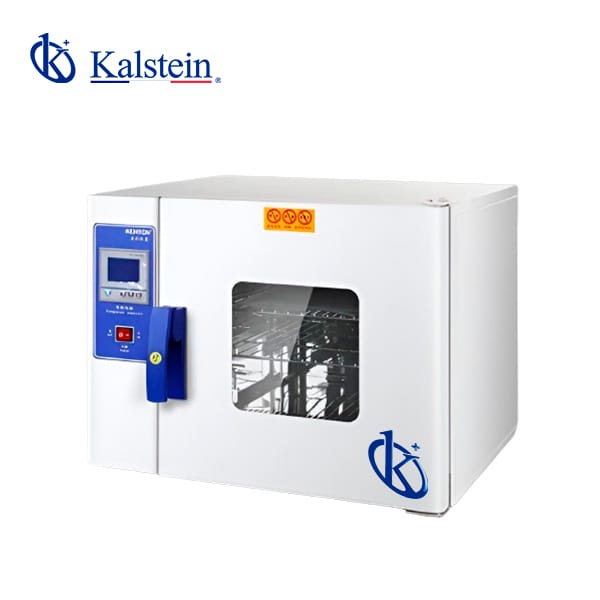Laboratory ovens are essential equipment in any scientific and research environment. Choosing the right one can be a challenge, especially with so many options available on the market. In this guide, I will provide you with all the necessary information to make an informed decision. Additionally, I will include a comparison table of the best laboratory ovens.
If you want to explore the high-end product catalog we have for you at KALSTEIN, visit us at https://kalstein.de/category-product/laboratory-line/ovens/. We assure you that through our easy and feasible online PURCHASE channels, you will find the best prices on the MARKET. We remind you that we, at KALSTEIN, MANUFACTURE high-level Laboratory Equipment for SALE. https://kalstein.de/
What are Laboratory Ovens and Why are They Important?
Laboratory ovens are devices designed to provide a controlled heat environment for a variety of scientific applications. From sterilizing equipment to incubating samples, these appliances are crucial for laboratory work.
Ovens allow precise temperature control, which is vital for obtaining reproducible and reliable results in experiments and processes. Additionally, many come equipped with advanced features that facilitate the programming and monitoring of specific conditions, thus improving the efficiency and accuracy of the work.
Types of Laboratory Ovens
There are several types of laboratory ovens, each designed for specific applications. The main types include:
Natural Convection Ovens
These ovens use natural air circulation to maintain the temperature. They are ideal for applications where air movement could affect results, such as in the incubation of biological cultures.
Forced Convection Ovens
Equipped with fans, these ovens provide more uniform heat distribution. They are preferred for applications that require quick temperature recovery and thermal homogeneity.
Vacuum Ovens
These ovens are primarily used for the desiccation of heat-sensitive samples. They operate at low pressures to reduce the boiling point of liquids, thus avoiding the thermal decomposition of materials.
Key Factors to Consider When Buying a Laboratory Oven
Choosing the right oven involves considering several critical factors to ensure it meets your specific needs. Here are some key points to keep in mind:
Temperature Range
The temperature range of the oven is a fundamental factor. Depending on your needs, you might require an oven that reaches extremely high temperatures or maintains precise control at low temperatures.
Capacity and Size
The oven’s capacity should be suitable for the samples and the workload you plan to handle. Consider the available space in your laboratory and the size of the samples you will manage.
Temperature Control
Modern ovens come with a variety of temperature control options, from simple thermostats to sophisticated digital control systems. Opt for a system that offers the precision and ease of use you need.
Additional Features to Look For
Besides the basic factors, there are additional features that can make a laboratory oven more efficient and convenient. Some of these features include:
Programmability
Ovens with programming options allow you to set and automate heating cycles, saving time and reducing human errors.
Safety
Safety features such as automatic shut-off, overheat alarms, and locking systems can prevent accidents and damage to samples.
Construction Materials
The materials used in the oven’s construction, such as stainless steel, can influence its durability and ease of cleaning.
Maintenance and Care of Laboratory Ovens
Proper maintenance of your laboratory oven is essential to ensure its performance and longevity. Here are some useful tips:
Regular Cleaning
Keep the oven clean from residues and spills to avoid cross-contamination and ensure even heat distribution.
Periodic Inspection
Conduct regular inspections to detect signs of wear or damage. Check the seals, gaskets, and electronic components.
Calibration
Ensure to calibrate the oven periodically to maintain accuracy in temperature control. This is especially important if you use the oven for critical applications.
Comparison of the Best Laboratory Ovens
Below is a comparison table of some of the best laboratory ovens available on the market, including those from the Kalstein brand. This table will help you visualize the differences and advantages of each model.
|
Brand and Model |
Type |
Temperature Range |
Capacity |
Temperature Control |
Additional Features |
|
Kalstein YR0536 |
Forced Convection |
Ambient +5°C to 300°C |
50 Liters |
Digital PID |
Programmable, Overheat Alarm |
|
Memmert UF110 |
Forced Convection |
Ambient +10°C to 300°C |
108 Liters |
Digital |
Drying Function, Adjustable Ventilation |
|
Thermo Scientific Heratherm |
Natural Convection |
50°C to 250°C |
60 Liters |
Thermostat |
Low Energy Consumption, Quiet Operation |
|
Binder ED 56 |
Natural Convection |
30°C to 300°C |
56 Liters |
Digital |
Overheat Safety System |
|
Yamato DKN602 |
Forced Convection |
Ambient +5°C to 260°C |
90 Liters |
Digital |
Timer, Memory Function |
|
Esco Isotherm |
Vacuum |
50°C to 200°C |
25 Liters |
Digital |
Integrated Vacuum System, Touch Panel |
Choosing the right laboratory oven is essential to ensure efficiency and precision in your experiments and processes. By considering factors such as type, temperature range, capacity, temperature control, and additional features, you can make an informed decision that meets your specific needs. I hope this guide has provided you with the necessary information to make an accurate choice. Always remember to consider your particular requirements and work environment when acquiring any laboratory equipment.
Optimize the efficiency of your laboratory with advanced medical technology and the right laboratory equipment, and ensure to keep your equipment in optimal conditions to obtain the best results in your research.

